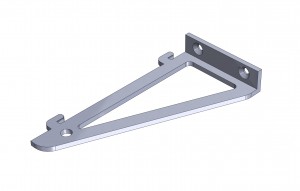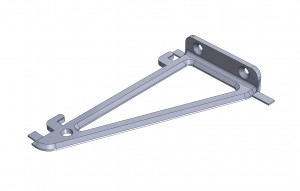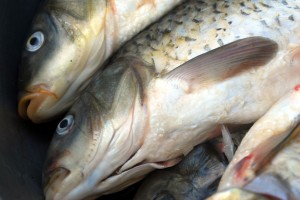 I’ve been really enjoying my Cube printer, but it has not been without its learning curve. Like any part design, you need to design the part with the manufacturing process in mind, and I’m learning quite a bit about extruded filament part production.
I’ve been really enjoying my Cube printer, but it has not been without its learning curve. Like any part design, you need to design the part with the manufacturing process in mind, and I’m learning quite a bit about extruded filament part production.
One issue is that large parts with thick sections tend to warp. The Cube software provides an option for a raft – basically a lattice of thin lines laid down first, providing a stable bed upon which to build the part – but this greatly increases the post-processing time. Namely, you need to scrape or sand off the raft. It’s not a huge deal but does waste material and time.
Consider the bracket design shown above. It’s simple enough, with a uniform cross section and was designed to be printable without needing supports (thin webs of material to support overhangs and such). However, when printing, this part would warp and curl, forcing me to abort the print.
To address this, I did a few things. First, I added thin tabs at the corners to help hold those down. The principle is similar to the raft, but much easier to clean up (just cut them off – very quick and clean). This alone did not produce a repeatable, printable part. So, I added large chamfers at all edges, to reduce the part thickness and reduce warping. This did the trick, and I was able to repeatedly print this (I’m using ABS, for what it’s worth). Here’s what the final design looks like:

As I learn more, I’m just not seeing how this technology is ready for mainstream home use like some articles seem to suggest. You need to be a tinkerer and know your way around CAD to get parts that are really going to do what you want. For that type of person though, this printer is fantastic! I’ve been able to iterate prototype parts much quicker than before and am producing better designs, faster.

 This is one of those stories I find almost too scary to be true…yet I don’t see reason to doubt it. A study by the Biodiversity Research Institute (
This is one of those stories I find almost too scary to be true…yet I don’t see reason to doubt it. A study by the Biodiversity Research Institute (

